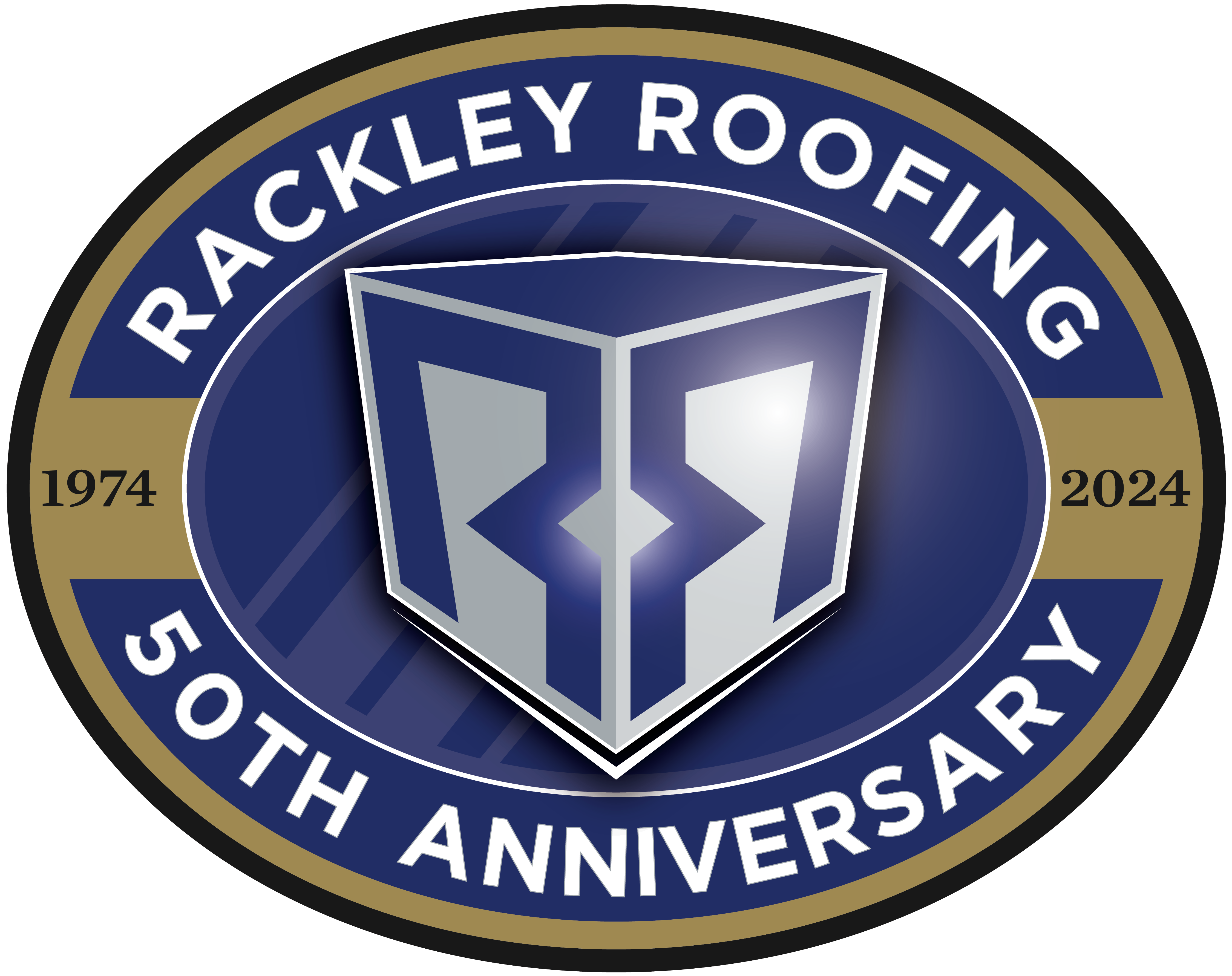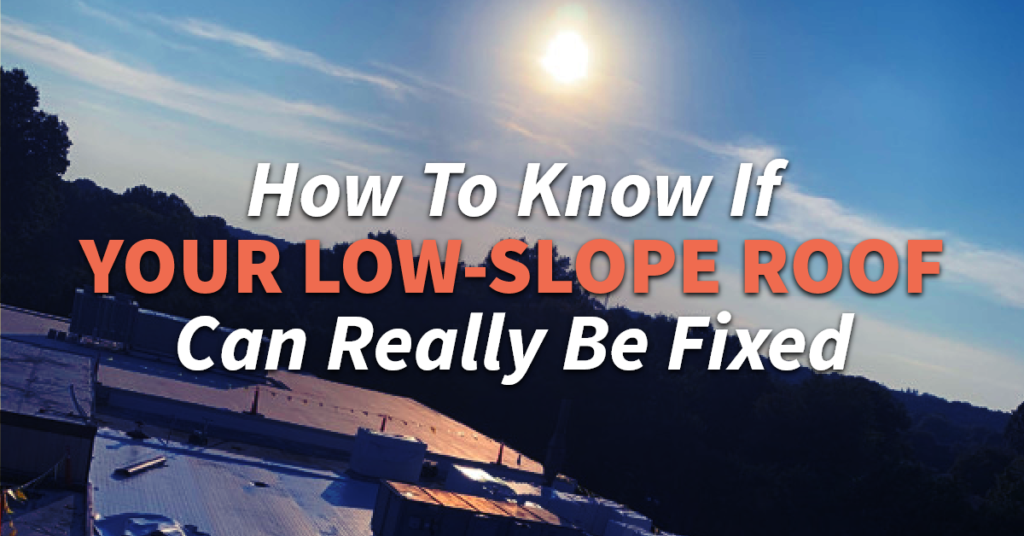We all know colleagues who jump from 0 to Panic in seconds. The molehill becomes a mountain. But with roofing, you can be forgiven for worrying how a roof repair may turn into a replacement. At Rackley Roofing, we have gathered some tips on knowing when a low-slope roof replacement is necessary.
Hands — Er, Feet Off!
First things first: however “flat,” you think your low-slope commercial roof is, it is still dangerous. Avoid subjecting your facilities crew to risk and stress. Avoid the potential for slips and falls and subsequent lawsuits or Worker’s Compensation claims.
Have only professional roofers walk on your commercial property’s low-slope roof. Some people mistakenly call such roofs “flat” roofs, but no commercial roof is genuinely flat; it would never drain if it were.
With your facilities crew safely on the ground, let’s see why your roof may need repair and how you can uncover the mystical moment when a repair is less helpful than a complete roof replacement.
Leaky Roof Repair
Commercial low-slope roofs leak for three main reasons:
- Ponding Water — When standing water does not drain or evaporate off your low-slope roof in 48 hours, you have ponding. This is often caused by depressed insulation, clogged internal drains or scuppers, or weak roofing materials. All of these issues can cause water to seep into your building.
- Membrane Failure — Punctures, age, wind scouring, rips from work boots, or open seams can allow water to move into and under the membrane, often spreading against gravity (capillary action), and defying your best efforts to locate the leak.
- Environmental Problems — Extremes in weather can cause roof leaks. High temperatures, direct and strong sunlight, heavy rains, hail damage, high winds; all of these can age a roof and cause water to infiltrate.
Your courteous, professional roofer will thoroughly diagnose roof leaks by inspecting the commercial roof. Even if you think you know the exact spot where water is getting in, your roofer will check everything, both visually and with a hands-on inspection.
Every roof leak presents unique challenges. Common problems include water entering one spot, traveling laterally for a distance, and then dripping into your building interior far from the original leak.
For example, to counter ponding problems, your roofer may recommend unclogging internal drains and parapet scuppers, raising insulation to fix low spots, and reshaping existing insulation to provide the correct slope in your low-slope roof.
Roof walks can remedy repeated repairs needed on membranes. Protected, assigned pathways with sturdy deck boards can prevent workers’ boots from cutting into and tearing the membrane. Limiting access also helps prevent roof leaks.
No Cure
Each roof is unique; each presents its own peculiar leak challenges. Your roofer is in the best position to help you decide when the return on investment (ROI) for repairs is no longer feasible. Sometimes, no cure exists short of complete roof replacement.
Repeat visits to revitalize an aged roof become costly to sustain. Frequent calls for roof leaks in the same roof area are also signals that the better option is complete roof replacement.
Many building owners or facility managers worry about a commercial roofer only being interested in a single, high-cost visit. This is seldom true with qualified, highly trained roofing crews. Your local commercial roofing contractor seeks to earn your respect and trust, creating a long-term relationship.
What starts as a simple repair becomes repeat business. Repeat business can include all the essentials of roofing asset management:
- Inspection
- Maintenance
- Cleaning
- Repair
- Succession planning
Trust your local commercial roofer to provide accurate information about the need for repair versus replacement. Your roofer will work with you.
Complete Roof Replacement
Once your low-slope roof is past its useful life span, and repairs are no longer sustainable, you will need to plan succession with your commercial roofer. Scheduling complete roof replacement, arranging financing, and digging into the Scope of Work details all take time.
Work with your roofer to select the best strategy, including complete tear-off of the old roof or reroofing over existing material. Your roofer may recommend highly reflective coatings to add energy efficiency to your new roof. A reflective coating can provide a significant boost in energy savings your old roof could not provide.
Be sure you work with a professional roofer who offers a full range of services, including diagnostic tools to assess your roof’s health. For example, a weak roof deck will never adequately support a “new” roof. Infrared scan inspections can spot problems beyond superficial leaks, too. Make full use of your commercial roofer before, during, and after your roof replacement. Rackley Roofing is the premier source for all aspects of commercial roofing for businesses throughout the southeastern United States. We specialize in maintenance, inspection, and installation of low-slope roofing. Contact us today!



